On Tuesday, Aug. 27, EA Sports released their first wave of ratings for the top-50 players in NHL 20. According to the EA website, overall attributes take into account individual abilities for both skaters and goalies. Here are the other articles:
- NHL 20 Players Ratings & Reactions
- NHL 20 Player Ratings: 41-50
- NHL 20 Player Ratings: 31-40
- NHL 20 Player Ratings: 21-30
So far, EA has given us some pleasant surprises but also some head-scratching picks. No matter the case, all we can do at this point is analyze the list, and that’s what we will do with No. 11 through 20.
No. 20: Johnny Gaudreau, 90 OVR
Affectionately known as Johnny Hockey, Gaudreau has been one of the top young forwards in the NHL since he began his career in 2013-14. Last season, he set a career-high in goals (36), assists (63), points (99), plus-minus (18), shooting percentage (14.7%) and average time-on-ice (20:04). Although he was virtually invisible in the Flames’ five playoff games, he has been and will continue to be a core player for them moving forward.
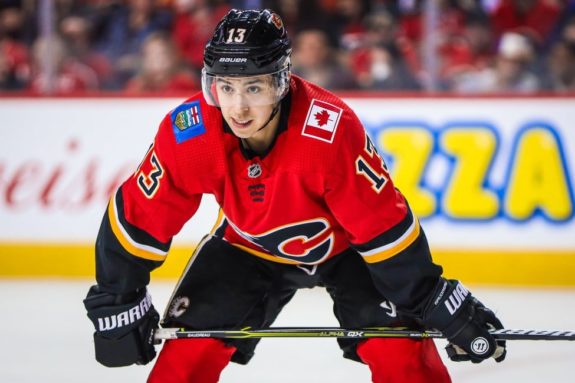
In NHL 19’s top-20 list, he was also at No. 20 and had a 90 overall rating, so he has been consistent over the last few seasons. His hand-eye, passing, puck control, agility and balance all got one-point upticks, as did his slap shot power, wrist shot accuracy and wrist shot power. His defensive awareness went down two points to an 86 and his durability is up to a 90, but while he deserves his 90 overall rating, he easily could have been a 91. He finished fourth in Hart Trophy voting and if anyone didn’t believe he was the real deal before last season, they do now. He will be a 92 by the All-Star break this season if all goes according to plan.
No. 19: Mikko Rantanen, 90 OVR
Rantanen is coming off back-to-back 80-point seasons and was leading the NHL in scoring for much of the first half of last year. He fell off the map a bit in the second half with just 13 points in 24 games, but he must have been saving some gas for the playoffs as he posted 14 points — six goals and eight assists — in 12 Stanley Cup Playoff games. He has solidified himself as one of the up-and-coming stars in the NHL.
Related: Mikko Rantanen: Avalanche’s Flying Finn

Rantanen was an 87 overall in NHL 19, and while a 90 was unexpected, it feels like the right number. He was the talk of the league in the first half last season and created a three-headed monster with MacKinnon and Landeskog. All of his puck skills attributes are up at least one point, and his offensive awareness went up from a 91 to a 93. I suspect EA also took into account his playoff performance, and that was the right move. He was a big reason they got as far as they did last season, and he will help them hopefully get past that level in 2019-20. Whether he gets upgraded or not throughout the updates depends on his health and his scoring pace compared to the rest of the league.
No. 18: John Tavares, 90 OVR
In his first season with the Toronto Maple Leafs, Tavares set a career-high in goals (47), points (88), plus-minus (19), even-strength goals (37), shooting percentage (16.4%) and face-off percentage (54.6%). He was the biggest free-agent signing last summer, and after adding five points in seven playoff games, he was one of the Maple Leafs’ best players last season.

Tavares was ranked No. 19 on NHL 19’s top-50 list and was a 90 overall. He got a one-spot increase on the list and is still a 90, which is the right number. Most notably, his face-offs went from an 82 to an 87 in NHL 20, a good upgrade considering he was strong in the dot last year. Since the 2010-11 season, Tavares has been one of the top 50 forwards in the NHL and will continue to be there for at least a few more years. If he’s able to set a pace for 90-plus points this season, he should get a one- or two-point upgrade later in the season.
No. 17: Brad Marchand, 90 OVR
Marchand had his first 100-point season in 2018-19 and his third consecutive season of at least 85 points. He also has four straight seasons of 30-plus goals, and while his style of play is subject to scrutiny, there’s no denying his offensive output. He has also been a strong player in the playoffs, posting 23 points in 24 Stanley Cup Playoff games this past spring.

Marchand was No. 35 on NHL 19’s top-50 list and his 18-spot increase this year, as well as a two-point overall increase, is well-deserved. All of his puck skills attributes are up at least two points, his defensive attributes are up at least one point, his poise went from an 85 to a 90, his slap shot accuracy is now a 91 and his wrist shot accuracy is a 92. Most of those who aren’t Boston Bruins fans don’t like Marchand — and with good reason — but as it was stated before, there’s no denying his scoring ability. His 90 overall and No. 17 spot on the list is spot-on, and he could see a slight increase if he’s on pace to match last season’s production.
No. 16: John Gibson, 90 OVR
For being the No. 1 goalie on a mediocre Anaheim Ducks team last season, Gibson’s numbers last year were solid. He had a .917 save percentage, (SV%) 2.84 goals-against average (GAA), 12.66 goals saved above average (GSAA), and .596 quality starts percentage (QS%) in 58 games. However, those numbers don’t look quite as good as his 2017-18 stats — a .926 SV%, 2.43 GAA, four shutouts and .650 QS%.
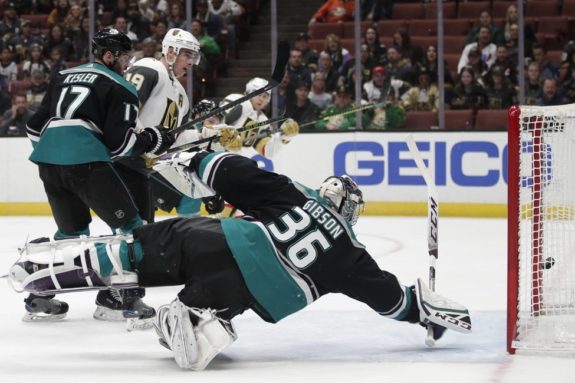
Gibson wasn’t on NHL 19’s top-50 list last year and was an 88 overall. He’s one of the tougher cases to rate because based on his numbers, he took a step back last season, but the entire Ducks organization had a bad season. When it’s all said and done, Gibson shouldn’t be a 90 overall but in last year’s range of an 88 or even an 89. He got increases to more than half of his attributes — including all seven of his reflexes — but it’s hard to say whether this was a good or bad call by EA because we don’t know what his numbers would have been like if the Ducks were better in front of him. If he can lead the Ducks back to the playoffs and produce at the same level he was last season, his 90 overall looks much better than it does right now.
No. 15: Auston Matthews, 90 OVR
Last season, Matthews set career-highs for goals (37), assists (36), points (73), power-play goals (12) and average ice time (18:33) all while only playing 68 games. The NHL 20 cover athlete is undoubtedly one of the bright young stars in today’s NHL and has proven to be as offensively skilled as anyone.
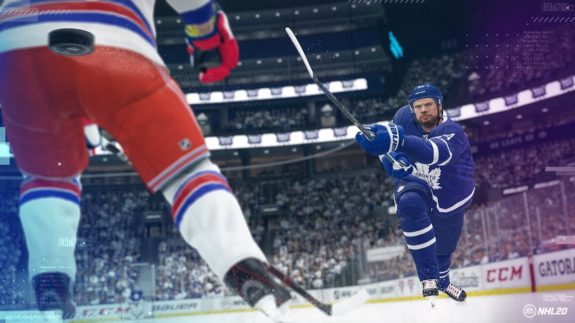
Matthews was an 89 overall in NHL 19, but this year is tough to decipher where he should be since his teammate Mitch Marner was an 89 overall. Had Matthews played all 82 games, he was on pace for about 88 points, which is six lower than Marner. When it’s all said and done, I think he and Marner should be at the same level, which is an 89. Matthews was given upgrades to his puck control (93), poise (95), slap shot accuracy (91) and wrist shot accuracy (92), among others, but it’s hard to say he was better than Marner last season because technically, he wasn’t. I think it helps that he’s on the cover of this year’s game, but even so, EA should have either made Matthews an 89 or Marner a 90 since they’re essentially on the same level.
No. 14: Aleksander Barkov, 90 OVR
In his first season as the Florida Panthers captain, Barkov raised his game to a new level last season and set career marks in just about every offensive category. He won his first Lady Byng Trophy and finished in the top five for the Selke Trophy for the second straight year. He had 35 goals and 96 points to round out the year and proved he can lead by example.
Related: Panthers Captain Barkov Leading Young Core
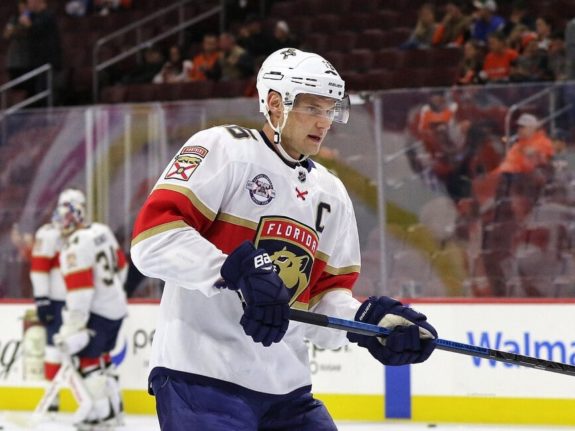
Personally, Barkov has been one of my favorite players for a few years now and it’s great to finally see him get some recognition as a 90 overall player. He was an 88 in NHL 19 — the correct rating based on his previous few seasons — but 96 points warrant a 90 overall rating. All of his puck skills are rated at least 91, and he got noticeable increases to his defensive awareness (93), face-offs (87) and poise (90). He’s one of the top two-way forwards in the game, and a 90 overall is on the money for the Panthers captain.
No. 13: Patrice Bergeron, 90 OVR
Although he played just 65 games last season, Bergeron still produced at All-Star-caliber levels. He tied his career-high with 32 goals and set a new career mark with 79 points — 27 of which came on the power play — and had a faceoff percentage of 56.6%. He also finished third in Selke Trophy voting, a trophy he’s won four times in his career.

Bergeron was ranked at No. 18 with a 90 overall in NHL 19, and it’s a no-brainer to give him a 90 again this year. There were two noticeable changes to his player from last year, and that’s a decrease in durability from an 85 to an 80 and a decrease in face-offs from a 95 to a 92. The durability makes sense — he was injured for part of last season — but the faceoff decrease, in my opinion, does not. He was ninth in the league in faceoff percentage last season and while it was below his mark in 2017-18, winning more than 55% of your faceoffs is an elite mark. He’s been in the top 10 in face-offs for the last decade now, and to decrease his rating by three points while he was still one of the best in the league in that category is ridiculous. The 90 overall is perfect, but EA completely missed the mark on his faceoffs, which should be at least a 94.
No. 12: Steven Stamkos, 90 OVR
Stamkos was back to his goal-scoring ways after what many considered an abnormal 2017-18 season. The Lightning captain scored 40 goals for the first time since 2014-15 and had 90 points for the first time since 2011-12, and he looked like the Stammer of old last season. He and league MVP Nikita Kucherov were one of the top duos in the league, both at even strength and on the power play.
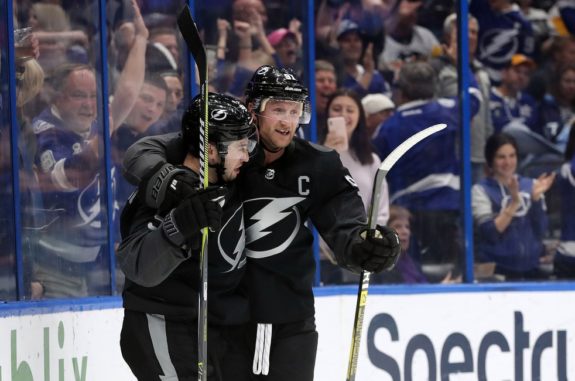
Stamkos was a 91 overall in NHL 19 and No. 10 on its top-50 list, so it’s a little confusing to figure out why he’s only a 90 in NHL 20. Although he could have been a 91, there’s no way he would dip below a 90. He got a two-point upgrade to his face-offs (84) as well as a one-point increase to his slap shot accuracy (91) and a nine-point uptick to his durability (89). As one of the top goal-scorers in the NHL, Stamkos could be a 91, but a 90 leaves room for upgrades throughout the season if he continues to light the lamp.
No. 11: Evgeni Malkin, 90 OVR
Malkin has been well better than a point per game in his career, and this past season was no different. He had 21 goals and 51 assists for 72 points — a lower total than in previous years, but still very productive. It was a down year for both Malkin and the Pittsburgh Penguins, but he was still producing at levels that helped his team into the playoffs.
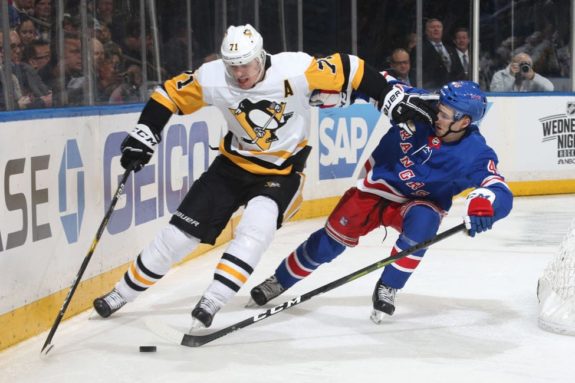
Malkin was the ninth-ranked player in NHL 19 at 91 overall, but his 90 rating heading in NHL 20 appears to be the right number. He had more than 20 points less than 2017-18 and was minus-25 in 2018-19 which is his worst plus-minus rating by a landslide. The only change EA made to his attributes was his durability, up down from an 87 to an 83. He’s still a great player, but he had a down year (based on his previous seasons) in terms of production. EA did the right thing by making him a 90 overall, but if Malkin can get back to an 80-point pace, he will go up to a 91 or 92.